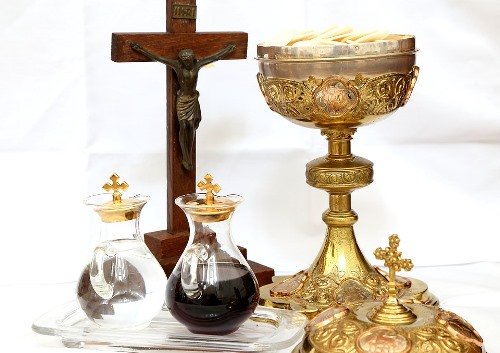|
The Museum of Religious or Sacred Art The Sacred Art Museum, and the department of Santa Cruz, suffered great cultural and historic losses on 10 November 2010 when thieves, who apparently spent the night inside the cathedral, stole several dozen silver and gold pieces, including centuries-old rings worn by archbishops, a golden chalice encrusted with emeralds, the world's smallest book which contained the Lord's Prayer in several languages, and many other museum pieces. The exact financial value of the stolen pieces in incalculable and their historic significance to this region is priceless.
The Museum of Sacred Art (Museo de Arte Sacro) is located within the San Lorenzo Basilica of the Cathedral on the corner of
Plaza 24 de Septiembre
the main square in Santa Cruz, Bolivia and is named after Monseñor Carlos Gericke Reiche, the priest who founded the museum 25 years ago. If history is interesting to you, check out the museum after you've spent some time in the plaza feeding the locals...er...pigeons.
The Cathedral in itself is a work of art, so on your way in through the front door take a look around. Most of the art on the walls is at least 100 years old and some dates back up to nearly 400 years ago. If you enter through the front cathedral door, walk toward your right and all the way down the hall to the front of the church. In the right hand corner you'll see a door that says MUSEO. The museum contains art owned by the Catholic church and typically paintings and sculptures depict religious scenes. Silver and gold pieces (such as bowls, candelabras, silverware, etc.) were used by the church during mass or other ceremonies. It also has some pieces with precious metals and gems, wooden carved images, and robes embroidered in gold that were used by priests centuries ago. The first salon is called the "Wood Room" and contains all wooden artifacts like a huge sculptured podium, statues, furniture, and other wood carvings. The second room is an exhibit of embroidered silk robes priests have worn in chronological order dating back to the Seventeenth Century. The third, and last room is filled with shields, candelabras, chalices, crowns, and other beautiful and ornate silver and gold pieces, many of which are adorned with precious stones. Considered the most important of its type in Bolivia, this museum houses pieces that belong to the Church and other churches in the region, and all date back 400-500 years to a time when the Church played an important role in the colonization of the Americas. It is a small museum, and you must be quiet and respectful when you walk through the Church, which is open to the public every day. San Lorenzo Cathedral Calle Ayacucho Santa Cruz de la Sierra, Bolivia Tel: (591-3) 332-4683 or 335-1424 Hours: Tuesday, Thursday and Sunday 10-12 a.m. and 2:30-6:00 p.m. Except for Sunday it's open until 8:00 p.m. Cost is Bs. 5 for students and children, Bs. 10 for adults. Photography is NOT allowed The Cathedral itself was designed by a French architect Felipe Bertres in 1845. After work on it began, it's design was modified to a more neoclassic style by Welshman León Musnier, and construction was finally completed in 1915 by Italian Victor Querezolo (truly an international effort, you could say). If you are physically up to it, you can climb the stairs that wind up to the cathedral clock tower to look out over the plaza and the city (BE CAREFUL right around the top of the hour - the bells ring REALLY LOUDLY!) For this, you do not enter the church. Walk up the front steps of the church and prior to entering, turn to a door located to the right of the cathedral front door. Inside you'll find a desk. The entry fee is Bs. 5. You can then climb up a narrow winding stairwell to the top of the belfry - a great place to view the city and take photos. And if you are emotionally up to it, you MIGHT be able to convince one of the priests to take you down into the catacombs underground, beneath the church. The church and its impressive walls and altar are also worthy of a walk-through. You could visit the museum, climb the belfry and (maybe) visit the catacombs all within just 2 hours or so. In all, you'll get to learn about the history of Santa Cruz, and look out over its present and future. By the way, all the artifacts exhibited in the Sacred Art Museum are made in Santa Cruz - unlike many other catholic churches in Bolivia, NONE were imported from France or Spain or anywhere else. You'll see the influence of native art mixed with Catholic symbols and themes in almost every piece. For example, you might see on a gold chalice a crucified Jesus with two indigenous men at his feet, offering him a cup of water. This museum clearly demonstrates how indigenous groups, rather that replacing their own beliefs for church teachings, incorporated the Catholic teachings into their native belief system.     |
